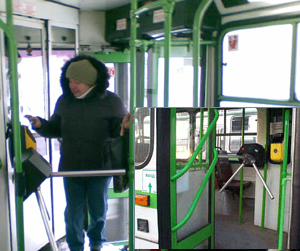Admiral Beez
Superstar
It does seem rather counterintuitive that the TTC thought that removing the operator‘s fare collection role and allowing entry at all doors without any interaction with TTC fare collection staff wouldn’t immediately result in a jump in fare evasion.the thought did occur to me that some kind of fare activated gate or turnstile would eventually be needed if the drivers (or other employee) were no longer acting as fare collectors, which seems to have become the case with the TTC
If we thought the honour system worked, why didn’t we from the 1950s to now just put an unmanned bucket at the door of the subway station and be rid of the collector staff and turnstiles?







